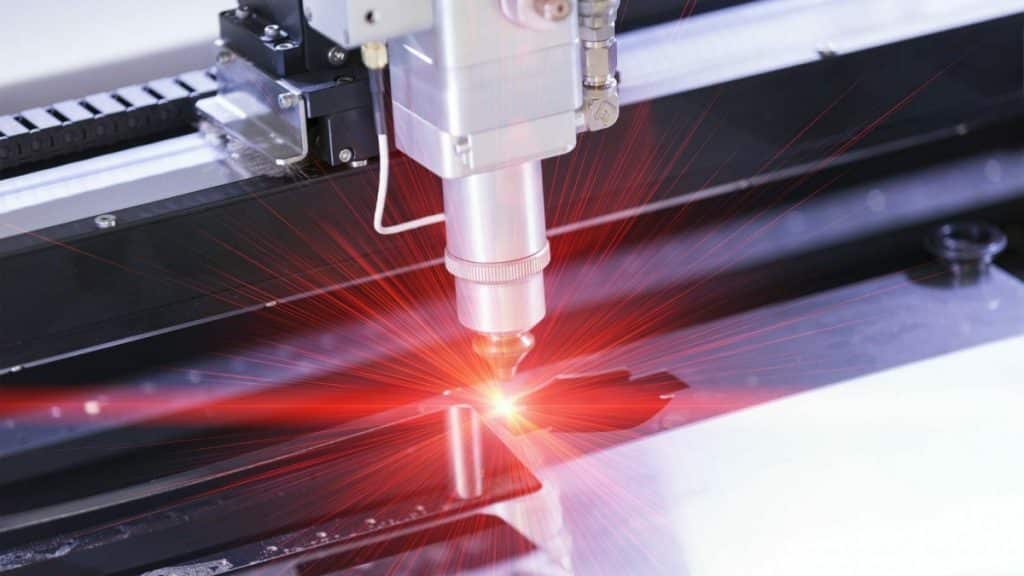Introduction
Laser cutting is an increasingly popular tool in personal and professional workshops, offering creative possibilities in crafting and manufacturing. However, it also presents some significant safety challenges, especially for beginners. Following essential safety tips can reduce risks and make the process smoother and safer for everyone in the workspace. Here are the most important laser cutter safety tips every beginner should follow.
Always Supervise the Laser Cutter
A laser cutter, although relatively autonomous, should never be left unattended while running. The primary reason is the fire hazard posed by high temperatures generated during cutting. Even short moments away from the machine can lead to overheating, potentially damaging the machine or causing fires if not managed promptly.
- Risk Factors: Laser cutters can cause fires or burn materials if something goes wrong, such as a misalignment or unexpected shift in material placement.
- Tip: Always keep a fire extinguisher nearby and ensure you or someone else is observing the laser cutter until it completes its task.
Understand Your Materials
Knowing the specific properties of the material you’re working with is crucial. Not all materials are suitable for laser cutting; some emit toxic fumes when cut, while others can damage the machine or ignite. For example, PVC is a dangerous material to cut, as it releases harmful gases that can damage health and equipment.
- Material Safety: Before cutting, research or consult your laser cutter’s manual to confirm the material’s compatibility.
- Commonly Safe Materials: Wood, paper, cardboard, and certain metals (if the machine is rated for them).
- Highlight: Avoid cutting materials that can produce toxic or highly flammable fumes to ensure safety.
Maintain a Clean Workspace
A clean, organized workspace not only enhances productivity but also prevents accidents. Debris like sawdust, residue, and small cut-offs can accumulate and ignite if exposed to high temperatures. Regular cleaning reduces this risk and helps maintain a professional, hazard-free environment.
- Routine: Make it a habit to clear your workspace after every session, ensuring all debris and leftover materials are disposed of properly.
- Safety Benefit: Keeping your workspace tidy minimizes fire risks and ensures a safe environment for everyone involved.
Familiarize Yourself with Your Machine
Each laser cutter model has unique characteristics and may come with specific safety requirements, making it essential to read the manual thoroughly. Manuals provide important guidance on setup, usage, maintenance, and safety features. Understanding these specifics can help you avoid mishaps and maximize the machine’s capabilities safely.
- Importance of Manuals: Manuals cover operational nuances and potential hazards unique to your machine model.
- Machine Variations: Some models require extra protective measures, such as eye protection or hand guards.
- Tip: Regularly review the manual and safety guidelines to stay updated on correct procedures.
Ensure the Safety of Others
If your laser cutter is set up in a shared space, like a home garage or a small workshop, it’s crucial to keep it secure from children, pets, or anyone unfamiliar with laser cutter safety. These groups might inadvertently enter the workspace, leading to potential accidents.
- Family & Pets: Children and animals are often curious, but they can be exposed to hazardous situations if they enter the workshop unsupervised.
- Safety Measures: Secure your workspace with physical barriers or clear warning signs. Educate family members on the importance of keeping away from the laser cutter when it’s in operation.
Recommended Laser Cutter: OMTech Mid-Range Laser Engravers
For beginners and intermediate users seeking reliable laser cutting, OMTech offers a range of high-quality, mid-range laser engravers suited for both personal and professional projects. These machines deliver precision, durability, and user-friendly interfaces, making them ideal for various materials. Whether you’re crafting or tackling larger projects, OMTech laser engraving machines provide a balance between performance and affordability, ideal for users aiming to achieve high-quality results with safety and efficiency in mind.
Conclusion
By following these safety practices, beginners can significantly reduce the risks associated with using a laser cutter. Monitoring the machine, knowing your materials, maintaining a clean workspace, understanding the equipment, and securing the environment ensure a safer, more productive laser cutting experience. Remember, safety is the top priority; a well-maintained, hazard-free workshop is essential for maximizing the potential of laser cutting while protecting everyone involved.
